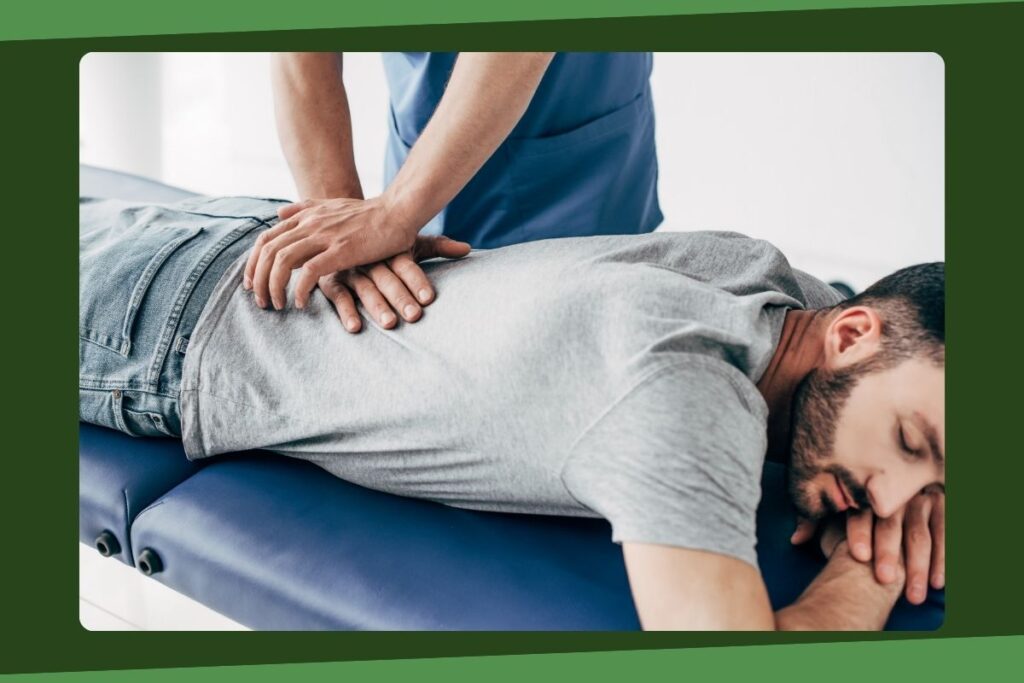How a Chiropractor Can Improve Your Spine Health
Wiki Article
Exploring Spinal Decompression Methods: What You Required to Know for Better Spine Care
Spinal decompression strategies are vital for people experiencing persistent neck and back pain or spinal problems. These techniques vary from non-invasive therapies to medical choices, each designed to relieve stress on the back. Recognizing these techniques is essential for efficient spine treatment. Not all approaches are ideal for every condition. The nuances behind each approach warrant more detailed exam, as they can significantly affect recovery and general wellness outcomes. What elements should one take into consideration prior to deciding?Comprehending Spinal Decompression
Spinal decompression might appear facility, it basically refers to a selection of methods aimed at minimizing pressure on the spinal cord and surrounding nerves. The spinal column is a crucial structure that sustains the body and shields vital neurological pathways. When compression happens, it can result in pain, discomfort, and decreased movement. Comprehending spinal decompression entails identifying the reasons of this stress, such as herniated discs, spinal stenosis, or injury. By attending to these underlying problems, decompression methods seek to restore proper alignment and function. This procedure can entail both non-surgical and surgical techniques, tailored to individual patient demands. The objective is to improve the high quality of life by eliminating pain, boosting pose, and facilitating far better movement. As recognition of spinal wellness grows, the importance of understanding spinal decompression becomes significantly relevant for those looking for effective therapy optionsUsual Spinal Decompression Strategies
Spinal decompression methods encompass an array of techniques designed to alleviate pressure on the spine and its connected structures. These strategies can be broadly classified into medical and non-surgical strategies. Non-surgical techniques consist of spinal traction, where mild pulling pressures are applied to the back, producing room in between vertebrae. This can reduce nerve compression and advertise recovery. Chiropractic care modifications also drop under this category, concentrating on straightening the spinal column to boost function.Surgical decompression strategies involve procedures such as laminectomy, where a section of the vertebra is removed to eliminate pressure on the spine or nerves. Discectomy, an additional surgical choice, requires the removal of herniated disc product. Furthermore, minimally intrusive methods, like endoscopic discectomy, are obtaining popularity because of their lowered recovery times. Each strategy serves a specific function and may be chosen based on individual person requirements and the severity of their spinal condition.
Benefits of Spinal Decompression
When taking into consideration the various methods to handling spinal concerns, the benefits of spinal decompression techniques become apparent. These methods intend to ease stress on the spinal discs and nerves, which can relieve discomfort and boost overall spinal health. By creating area between vertebrae, decompression promotes improved blood circulation and nutrient circulation to the impacted locations, facilitating healing and recovery.Additionally, spinal decompression can help restore the natural positioning of the spinal column, potentially minimizing the danger of future injuries. Individuals often report increased mobility and adaptability list below therapy, causing an enhanced lifestyle. The decrease in stress can reduce symptoms associated with problems such as herniated discs, sciatica, and spinal stenosis, supplying a non-invasive choice to even more intrusive treatments. Generally, spinal decompression methods provide a variety of restorative and physical benefits, making them a valuable component of considerable spine treatment.

That Can Gain From Spinal Decompression?
Individuals experiencing from persistent back discomfort, herniated discs, or spinal stenosis might find substantial alleviation with spinal decompression strategies. This non-invasive treatment can be specifically useful for those experiencing nerve compression symptoms, such as tingling, feeling numb, or weakness in the limbs. Professional athletes recuperating from injuries or people with degenerative disc illness might additionally think about spinal decompression as a sensible option for discomfort monitoring and enhanced flexibility.Prospects for spinal decompression frequently consist of those who have actually not reacted well to traditional treatments, such as medicines or physical treatment. It can additionally serve as an option for people looking for to avoid surgical intervention. On the whole, spinal decompression strategies can provide a restorative choice for numerous people encountering spinal issues, helping them reclaim a better of life and useful ability. Consulting a health care expert is vital to identify the suitability of this therapy for certain conditions.
Factors to consider and Precautions for Spinal Decompression

The type of spinal decompression strategy-- whether surgical or non-surgical-- need to line up with the person's certain problem and general wellness status. Surveillance during the treatment is vital to address any type of adverse reactions without delay. Individuals must likewise understand that spinal decompression is not a one-size-fits-all remedy; a substantial treatment plan may consist of physical therapy or way of life modifications to sustain Back Decompression Therapy recovery. Generally, sticking to these safety measures can substantially enhance the effectiveness of spinal decompression treatments and advertise optimal back health.

Frequently Asked Questions
For how long Does a Normal Spinal Decompression Session Last?
A normal spinal decompression session lasts in between 30 to 45 minutes. This duration enables for suitable therapy while making sure the patient remains comfortable and receives ample attention to their certain spinal concerns and demands.Can Spinal Decompression Be Done in the house?
Spinal decompression can be executed in your home through specific exercises and devices, such as inversion tables or back dental braces. Nonetheless, consultation with a healthcare professional is recommended to guarantee safety and effectiveness in individual cases.Is Spinal Decompression Painful?
Spinal decompression is typically not excruciating; nonetheless, people may experience mild pain or pressure throughout the treatment. Discomfort levels can vary based upon the person's problem and the technique used for decompression.The Number Of Sessions Are Usually Needed for Alleviation?
Normally, individuals may call for 6 to 10 sessions of spinal decompression therapy to experience considerable alleviation (Family Chiropractic). The specific number can vary based on individual problems and responses to therapy, requiring personalized examination by medical care professionals.Are There Any Age Limitations for Spinal Decompression?
There are normally no rigorous age restrictions for spinal decompression therapy. Nonetheless, suitability may depend upon specific health conditions and the certain strategy made use of, so consultation with a medical care professional is recommended for customized suggestions.Spinal decompression strategies are important for individuals experiencing chronic back pain or spinal problems. Spinal decompression might seem facility, it fundamentally refers to a range of methods intended at easing stress on the spinal cable and surrounding nerves. When taking into consideration the numerous strategies to taking care of spinal concerns, the advantages of spinal decompression strategies come to be evident. People enduring from chronic back discomfort, herniated discs, or spinal constriction may locate substantial alleviation with spinal decompression techniques. On the whole, spinal decompression strategies can give a therapeutic option for numerous people encountering spinal problems, helping them restore a higher quality of life and functional ability.
Report this wiki page